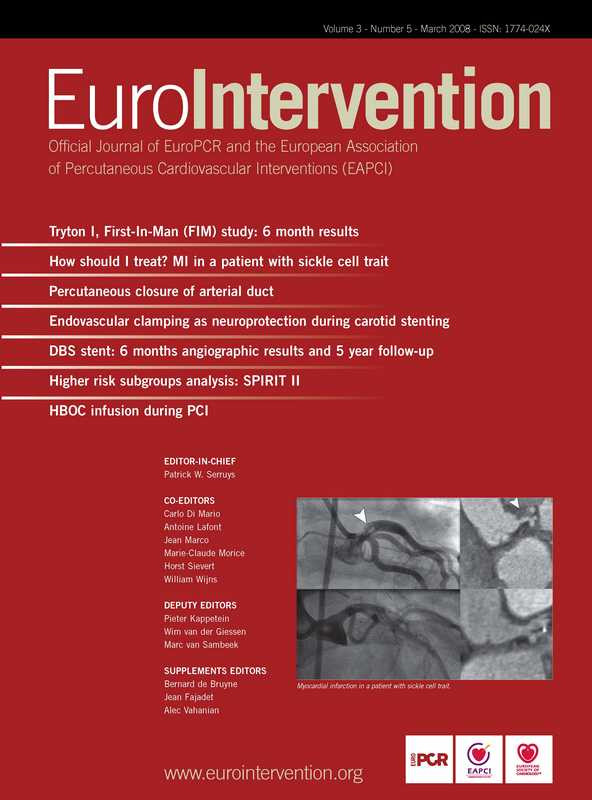Dear Colleagues,
Multiplicity has its advantages. Change and innovations in our speciality have their rewards, not just for our patients, but the rapidity in which we advance in our techniques and research. But there is a flip side to all the blessings we have received these last years: the necessary act of making choices, of looking at this plenitude of developments and taking that “educated guess” on what to continue working on and what to put aside... This, unfortunately, sometimes will force the most promising techniques to the sidelines. Not because they lack in promise but simply because so much is happening, so much is developing and our scientific attention, like fashion, can change with the seasons. And afterall, you do have to decide, you have to draw the line somehow. Or do you?
Choice
Dozens of new procedures and stents are arriving at maturity in our field, and we have the opportunity to discuss them in these pages. They are the fruit of many years of long and painstaking work and reflect the collaboration of both scientist, doctor and industry. In this issue you will find an article, however, that has come to our attention, whose author presents both a six month and then five year follow-up for a stent he was working on.
Why the time lapse between the two?
Alain Dibie wrote to us a few months ago, presenting the case for his stent, a “two branched BMS stent, designed for stenoses of the coronary bifurcation” which had been “tested by well known operators, in a multicentred study with encouraging short- and long-term clinical results”. What happened? Why was he not able to fully develop his stent? What were the conditions that led this promising and ongoing project to be postponed or discontinued? Is this an example of a missed opportunity? And how many more cases, like this one we are presenting, exist today?
We want EuroIntervention to be a forum for all possibilities, offer you the chance to judge for yourselves, let you examine what could, or might have been... or perhaps, still might be...
Credibility
Our ultimate goal is advancing our profession and we do this by trying to communicate in the most clear and credible, innovative and effective way, keeping us all informed, not only on the latest developments in our field, but also the very basic foundations on which we practice, and which remain the underpinnings, the foundation from which we advance.
In this issue we are proud to introduce our new “hands-on” section, inspired, in style, by the great EuroPCR course tradition itself. “How should I treat”, is a new section where a challenging case report is presented – complete with supplemental online data – and two experts are invited to comment on how they would approach the case, followed by how the case was actually treated.
The rules are simple: The person presenting the case is unaware of what the experts will say, and the experts themselves are blinded to the actual results – the way the case was truly treated. We think this will be an educational challenge for us all, and here in our first “How should I treat”, Carlos Van Mieghem presents the case, David Antoniucci gives his interventionalist opinion, and David Taggart, the surgeons view. David Taggart is an excellent example of what we are trying to accomplish here. A worthy opponent in the debates on treatment methods, he, by his willingness to participate and dialogue, aids us all in advancing our science.
In this issue as well, we return to “back to basics” with an expert review by Peter Lanzer “Spelling out risk reduction strategies for intracoronary stenting”, and an editorial by Eliseo Vano, well known to EuroPCR audiences for his talks on radiation, in which he reminds us of the importance of this subject, commenting on an article published in this issue by Olivier Bar et al on the state of radiation exposure in France.
EuroIntervention at EuroPCR
And all this leads up to our next exciting development, the continuing evolution EuroIntervention – our new dedicated EuroIntervention Session at the next EuroPCR in Barcelona... but we will have time to speak about that in our next issue.
For now, know that we too, the Editorial Board, myself and our peer reviewers have needed to make some choices of our own, starting with the choices concerning which articles are published here. We hope you appreciate them, learn from them, and if there are questions... Ask them! Write us. Submit papers.
Make this journal, your journal, as well as ours.

